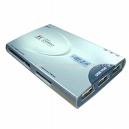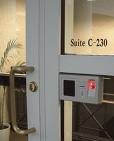Large variety applications of Smart cards
2008-08-19
Large variety applications of Smart cards A smart card resembles a credit card in size and shape, but inside it is completely different. A key feature of smart cards is that the embedded microprocessor inside can provide secure storage for data. Smart cards must support authentication and authorization: the card holder is authenticated through a Personal Identification Number (PIN) or other mechanism, and can be authorized to access only particular data on the card, or carry out a particular range of activities with the card. Smart cards can hold all sorts of unique information about its carrier, such as credit and debit account balances, insurance coverage, access credentials, and subscription information. One smart card can basically take the place of all of the other plastic cards in your wallet. To maintain such versatility across applications, however, each application provider must agree on chip architecture to use. If the insurance market agrees on one type of card and the financial market agrees on another, for example, the two markets will not be able to store an individual's information on the same card. Therefore, the International Standards Organization (ISO) has created standard #7816, detailing numerous standards regarding the smart card chip organization. An 8-bit microprocessor card that meets ISO specifications uses five of its eight contact fields for the same uses that every other ISO smart card does. Contact field #1 always supplies the voltage to power the card. Contact field #2 resets the information on the card. Contact field #3 regulates the clock frequency, or microprocessor speed. Contact field #5 supplies the ground. Contact field #7 monitors all communication to and from the card. Manufacturers can designate the remaining three contact fields as they wish. While contact field #6 originally supplied a different voltage than contact field #1 could supply, recent advances in chip technology have enabled contact field #1 to supply both three-volt and five-volt power to the chip. Therefore, manufacturers .jpg) can use contact field #6 for other applications, such as USB connectivity. Overall, we can sum up the process above into the following steps: 1. User requirements: What does the user want to accomplish? 2. Software requirements: Map user requirements to software requirements. 3. Architectural design: Design the architecture of the solution. 4. Code Generation: Create code as per the architecture. 5. Emulation: Use emulators to test the code on virtual card. 6. in-card Emulation: Run the code on actual card using card reader. 7. Verification and Validation: It involves the testing. 8. Final testing and maintenance. As the different types of embedded chip technologies of the smart cards, these cards generally could be divided in to the following types:
can use contact field #6 for other applications, such as USB connectivity. Overall, we can sum up the process above into the following steps: 1. User requirements: What does the user want to accomplish? 2. Software requirements: Map user requirements to software requirements. 3. Architectural design: Design the architecture of the solution. 4. Code Generation: Create code as per the architecture. 5. Emulation: Use emulators to test the code on virtual card. 6. in-card Emulation: Run the code on actual card using card reader. 7. Verification and Validation: It involves the testing. 8. Final testing and maintenance. As the different types of embedded chip technologies of the smart cards, these cards generally could be divided in to the following types: .gif) Contact Cards Cards of the size of a conventional credit or debit card with a single embedded integrated circuit chip that contains just memory or memory plus a microprocessor.Popular Uses: Network security, vending, meal plans, loyalty, electronic cash, government IDs, campus IDs, e-commerce, health
Contact Cards Cards of the size of a conventional credit or debit card with a single embedded integrated circuit chip that contains just memory or memory plus a microprocessor.Popular Uses: Network security, vending, meal plans, loyalty, electronic cash, government IDs, campus IDs, e-commerce, health 
 Contact less Smart Card Cards containing an embedded antenna instead of contact pads attached to the chip for reading and writing information contained in the chip's memory. Popular Uses: Student identification, electronic passport, vending, parking, tolls, IDs
Contact less Smart Card Cards containing an embedded antenna instead of contact pads attached to the chip for reading and writing information contained in the chip's memory. Popular Uses: Student identification, electronic passport, vending, parking, tolls, IDs

 Combi Cards Cards containing one smart chip that can be accessed through either contact pads or an embedded antenna. Popular Uses: Mass transit and access control combined with other applications such as network security, vending, meal plans, loyalty
Combi Cards Cards containing one smart chip that can be accessed through either contact pads or an embedded antenna. Popular Uses: Mass transit and access control combined with other applications such as network security, vending, meal plans, loyalty

 Hybrid Cards Cards containing two or more embedded chip technologies such as a proxy chip with its antenna and a contact smart chip with its contact pads. Popular Uses: Accommodates legacy system infrastructure while adding applications that require different e-card technologies
Hybrid Cards Cards containing two or more embedded chip technologies such as a proxy chip with its antenna and a contact smart chip with its contact pads. Popular Uses: Accommodates legacy system infrastructure while adding applications that require different e-card technologies

 Proximity Cards "Proxy cards" communicate through an antenna similar to contact less smart cards except that they are read-only. Popular Uses: Security, identification, access control
Proximity Cards "Proxy cards" communicate through an antenna similar to contact less smart cards except that they are read-only. Popular Uses: Security, identification, access control 

.jpg) can use contact field #6 for other applications, such as USB connectivity. Overall, we can sum up the process above into the following steps: 1. User requirements: What does the user want to accomplish? 2. Software requirements: Map user requirements to software requirements. 3. Architectural design: Design the architecture of the solution. 4. Code Generation: Create code as per the architecture. 5. Emulation: Use emulators to test the code on virtual card. 6. in-card Emulation: Run the code on actual card using card reader. 7. Verification and Validation: It involves the testing. 8. Final testing and maintenance. As the different types of embedded chip technologies of the smart cards, these cards generally could be divided in to the following types:
can use contact field #6 for other applications, such as USB connectivity. Overall, we can sum up the process above into the following steps: 1. User requirements: What does the user want to accomplish? 2. Software requirements: Map user requirements to software requirements. 3. Architectural design: Design the architecture of the solution. 4. Code Generation: Create code as per the architecture. 5. Emulation: Use emulators to test the code on virtual card. 6. in-card Emulation: Run the code on actual card using card reader. 7. Verification and Validation: It involves the testing. 8. Final testing and maintenance. As the different types of embedded chip technologies of the smart cards, these cards generally could be divided in to the following types: .gif) Contact Cards Cards of the size of a conventional credit or debit card with a single embedded integrated circuit chip that contains just memory or memory plus a microprocessor.Popular Uses: Network security, vending, meal plans, loyalty, electronic cash, government IDs, campus IDs, e-commerce, health
Contact Cards Cards of the size of a conventional credit or debit card with a single embedded integrated circuit chip that contains just memory or memory plus a microprocessor.Popular Uses: Network security, vending, meal plans, loyalty, electronic cash, government IDs, campus IDs, e-commerce, health 
 Contact less Smart Card Cards containing an embedded antenna instead of contact pads attached to the chip for reading and writing information contained in the chip's memory. Popular Uses: Student identification, electronic passport, vending, parking, tolls, IDs
Contact less Smart Card Cards containing an embedded antenna instead of contact pads attached to the chip for reading and writing information contained in the chip's memory. Popular Uses: Student identification, electronic passport, vending, parking, tolls, IDs 
 Combi Cards Cards containing one smart chip that can be accessed through either contact pads or an embedded antenna. Popular Uses: Mass transit and access control combined with other applications such as network security, vending, meal plans, loyalty
Combi Cards Cards containing one smart chip that can be accessed through either contact pads or an embedded antenna. Popular Uses: Mass transit and access control combined with other applications such as network security, vending, meal plans, loyalty 
 Hybrid Cards Cards containing two or more embedded chip technologies such as a proxy chip with its antenna and a contact smart chip with its contact pads. Popular Uses: Accommodates legacy system infrastructure while adding applications that require different e-card technologies
Hybrid Cards Cards containing two or more embedded chip technologies such as a proxy chip with its antenna and a contact smart chip with its contact pads. Popular Uses: Accommodates legacy system infrastructure while adding applications that require different e-card technologies 
 Proximity Cards "Proxy cards" communicate through an antenna similar to contact less smart cards except that they are read-only. Popular Uses: Security, identification, access control
Proximity Cards "Proxy cards" communicate through an antenna similar to contact less smart cards except that they are read-only. Popular Uses: Security, identification, access control 